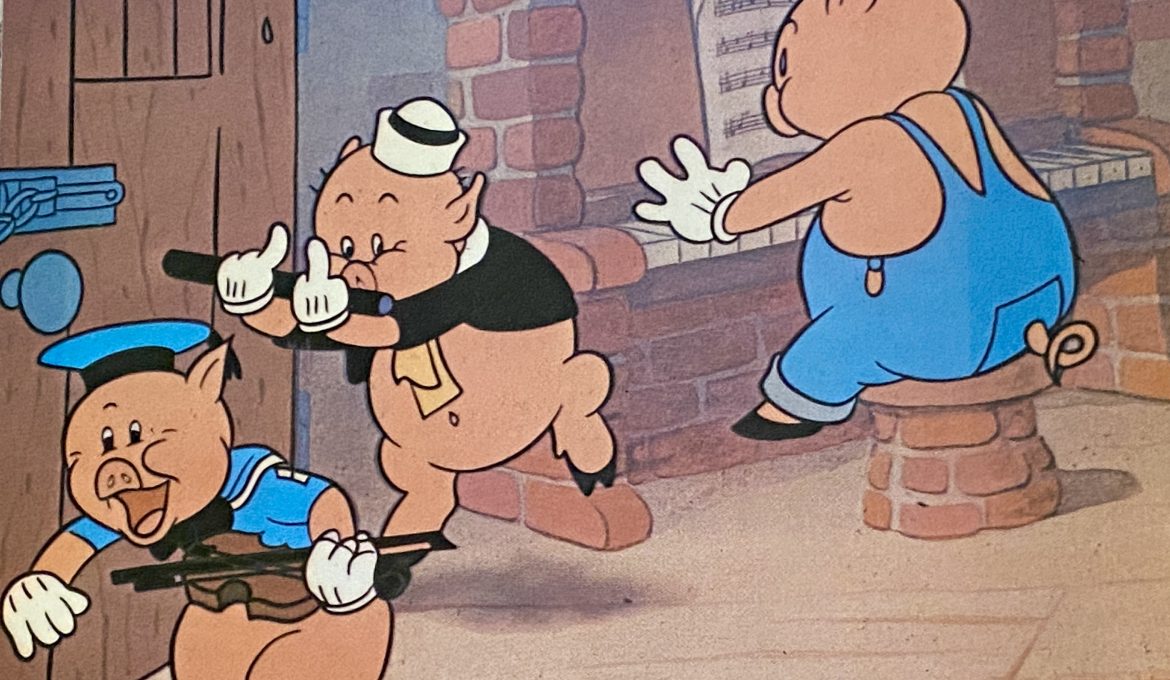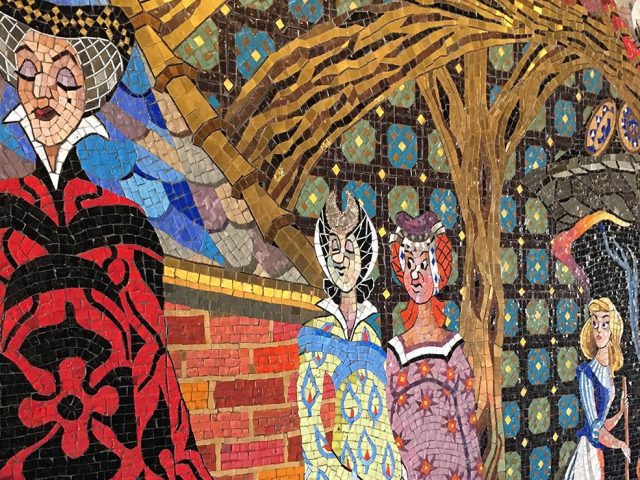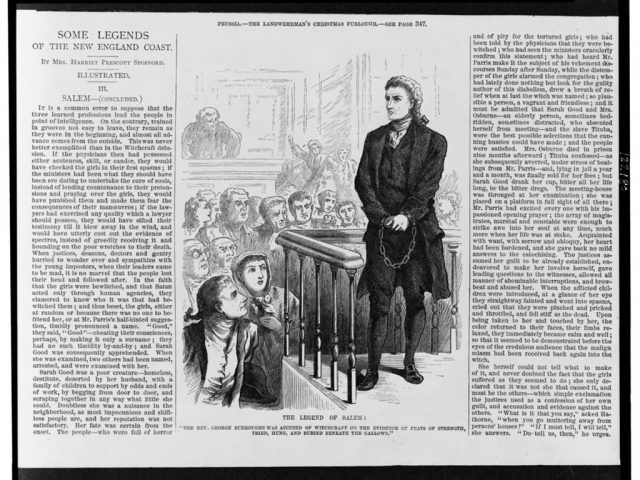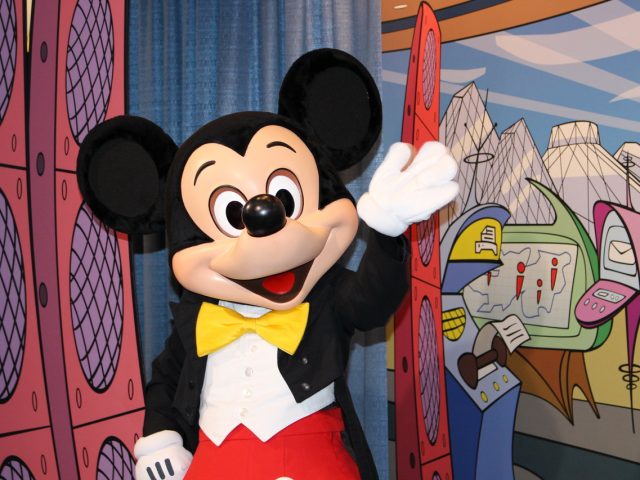Never a man to rest on his laurels, Walt Disney always looked for new innovations in animation. He led his company to develop the first animated cartoon synchronized to sound in 1928 and he made an exclusive deal with Technicolor, for use of its 3-color process, around 1932.
In 1933, Walt had another big idea for cartoon storytelling – character development. While he insisted his shorts be packed with gags, gags, and more gags, he also thought characters needed unique personalities. Audiences might enjoy “caring” about his cartoon actors.
“Walt got into distinguishing one (character) from another by personalities,” said early Disney animator Isadore (Friz) Freleng in the book Walt in Wonderland. “Then it changed the whole thing.”
The experiment was tried using the story of the Three Little Pigs – a tale about two lazy pigs, one hard-working pig, and an evil wolf. It was just the kind of moral fable Walt liked, where good triumphs over evil and the clever pig is rewarded. To bring out each pig’s personality, there was no synchronized movement of the characters. The pigs danced and played music independently. The wolf moved slyly about, drooling whenever pigs were in sight.
Three Little Pigs was released on May 27, 1933. The short was colorful, packed with music and sound effects, and had plenty of gags (a portrait of a string of sausages hanging in the house is labeled with the title “father”).
Personality animation provided just what Walt wanted. In a few minutes, audiences were rooting for the hero pig and despising the wolf, which to many represented the dark hand of the Great Depression knocking at the door.
The iconic song, “Who’s Afraid of the Big Bad Wolf” became a rallying cry for the millions of weary Americans who were down-and-out in 1933.
Animators Fred Moore and Dick Lundy were chosen to draw the pigs, named Fiddler Pig, Fifer Pig, and Practical Pig. Norman Ferguson was the animator who created the evil wolf.
“Who’s Afraid of the Big Bad Wolf?” was penned by Frank Churchill, with the help of storymen Ted Sears and Pinto Colvig. The whole eight-and-a-half-minute film was directed by Bert Gillett, although Walt was intimately involved as well.
Three Little Pigs was a smash hit. As feature films came and went, Three Little Pigs kept playing. Some theater marquees billed Three Little Pigs above the title of the featured movie. The film also won the Academy Award for Best Cartoon.
As far as money goes, the short made a tidy profit of $60,000 (about $1.4 million today). Such modest success sparked another idea inside of Walt. What if he could successfully make a full-length feature film? The profits would be game-changing.
Well, you know the rest of that story. (If not, check out our post on Snow White and the Seven Dwarfs.)
This week marks the 90th anniversary of Three Little Pigs. If it’s been a while since you’ve seen the short, it is currently streaming on Disney+.
References used to write this story include: Three Little Pigs, by Walt Disney; An American Original: Walt Disney by Bob Thomas; Disney A to Z The Official Encyclopedia 5th Edition, by Dave Smith; The Art of Walt Disney by Christopher Finch; Art of Animation by Bob Thomas; and Walt in Wonderland: The Silent Films of Walt Disney by Russell Merritt and J.B. Kaufman
Thanks for Popping In!
Have a question or a suggestion for a future post? Email us at mainstreetpopin@gmail.com
Follow MAIN STREET POP IN on
facebook instagram




